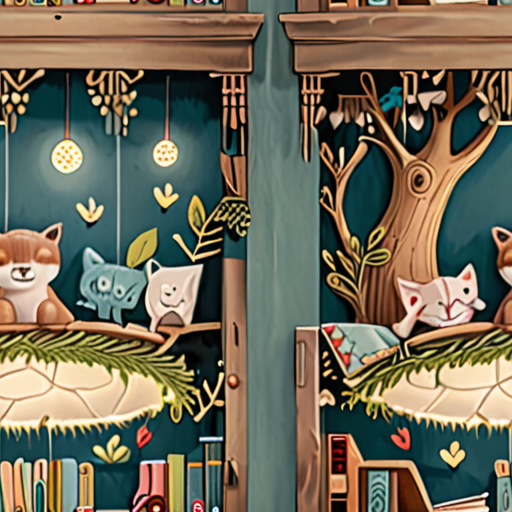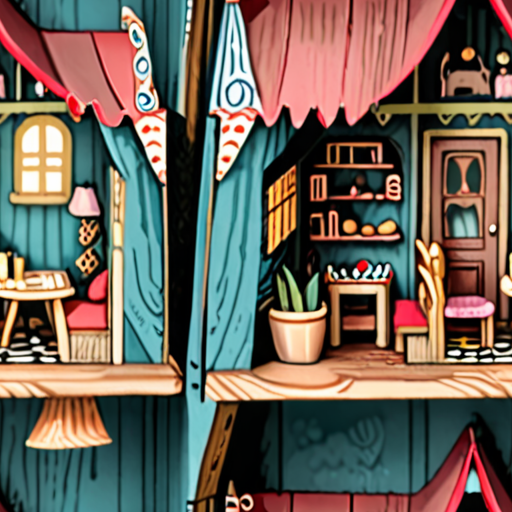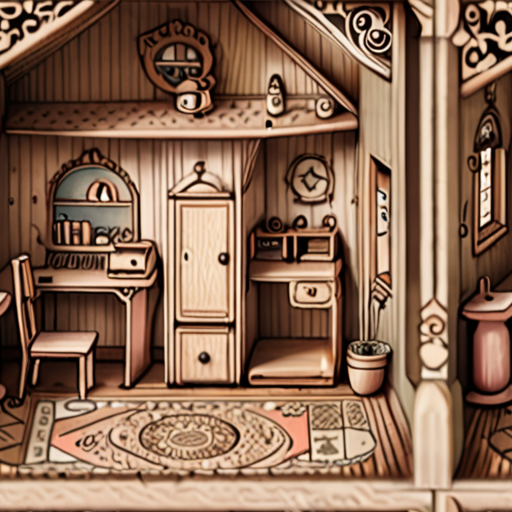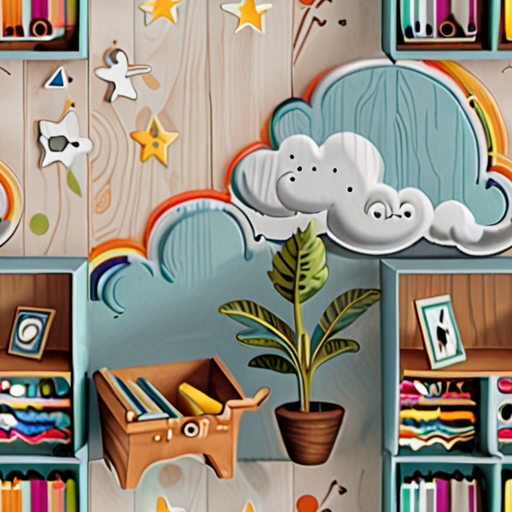Transforming a small playroom into a vibrant and imaginative space where your child can grow, learn, and thrive is a daunting task, especially when space constraints seem to limit your options. However, with the right playroom ideas, you can turn even the tiniest area into a haven that fosters creativity, curiosity, and a love for learning.

Maximizing Space and Encouraging Creative Play in Small Playrooms
As a parent, transforming your small playroom into a vibrant haven where creativity thrives is essential for your child’s development.
-
Optimize Layout and Furniture
Consider multi-functional furniture pieces, such as storage ottomans or desks with built-in shelves, to save space and keep clutter at bay.
Utilize vertical space by installing wall-mounted shelves, hooks, or storage units to keep toys and accessories organized and easily accessible.
Choose compact or foldable furniture options, like a play table or chairs, to create a flexible play area that adapts to changing needs.
-
Incorporate Colorful Accents and Textiles
Add pops of color with vibrant rugs, throw pillows, or blankets to create a visually stimulating environment that sparks imagination.
Use removable wallpaper or decals to add patterns and designs to walls, making it easy to update the look as your child grows.
Select durable, washable fabrics for upholstery and curtains to simplify cleaning and maintenance.
-
Foster Creativity with Interactive Elements
Incorporate interactive elements, such as a chalkboard wall, whiteboard, or magnetic board, to encourage drawing, writing, and problem-solving skills.
Install a reading nook with a cozy chair, floor lamp, and bookshelf to foster a love for reading and learning.
Create a sensory bin station with various textures, colors, and materials to engage your child’s senses and promote exploration.
-
Make it Tech-Friendly
Invest in a kid-friendly tablet or educational computer with parental controls to access a world of educational apps and games.
Set up a charging station with USB ports and power outlets to keep devices charged and organized.
Consider a smart speaker or voice assistant to introduce your child to voice commands and basic programming concepts.
-
Personalize and Involve Your Child
Encourage your child to participate in the design process by involving them in the decision-making and decoration of the playroom.
Display their artwork, creations, or achievements to boost confidence and pride in their accomplishments.
Create a special “idea box” where your child can submit suggestions for future playroom updates or improvements.
By implementing these space-saving ideas and encouraging creative play, you’ll create a dynamic and engaging playroom that fosters your child’s growth and development.
Remember to regularly evaluate and adjust the layout and activities to ensure the playroom remains a source of joy and inspiration for your child.
Whimsical Kids Playroom Decor Ideas That Spark Imagination and Learning
Transform your tiny play area into a vibrant hub of creativity with these top kids playroom decor ideas, expertly designed to spark imagination and foster learning in even the smallest of spaces.
-
1. Colorful Wall Mural
Create a focal point in your playroom with a colorful wall mural featuring your child’s favorite characters or a fun design. This can be achieved using paint, stickers, or even a removable wallpaper. Consider incorporating educational themes, such as alphabet letters or numbers, to encourage learning.
-
2. Book Nook
Designate a cozy reading nook with pillows, blankets, and a floor lamp. Add a bookshelf filled with a variety of books, including classics and modern favorites. This inviting space will encourage your child to develop a love for reading.
-
3. Art Station
Set up an art station with a table, chairs, and a variety of art supplies, such as paints, markers, and crayons. This space allows your child to express their creativity and explore different artistic techniques.
-
4. Music Corner
Create a music corner with a keyboard, drum set, or other musical instruments. This space fosters creativity and helps develop your child’s musical skills.
-
5. Sensory Bin
Design a sensory bin filled with rice, beans, sand, or water and hide small toys or other objects for your child to discover. This interactive space stimulates your child’s senses and encourages exploration.
-
6. Dress-up Corner
Set up a dress-up corner with costumes, hats, and accessories. This space encourages imaginative play and role-playing.
-
7. Building Zone
Designate a building zone with blocks, LEGO, or magnetic tiles. This space develops problem-solving skills and hand-eye coordination.
-
8. Reading Light
Add a reading light to your playroom to create a warm and inviting atmosphere. Choose a light that is safe and easy to use for your child.
-
9. Storage Solutions
Invest in storage solutions, such as shelves, bins, and baskets, to keep toys and supplies organized and out of sight. This helps maintain a clutter-free playroom and makes cleaning easier.
-
10. Personalized Touches
Add personalized touches, such as your child’s name or initials, to make the playroom feel special and unique. Consider creating a customized wall decal or painting a mural with your child’s name.
By incorporating these whimsical kids playroom decor ideas, you’ll create a space that sparks imagination and fosters learning in even the smallest of spaces.

Top Tips for Creating a Fun and Functional Playroom Design
When it comes to designing a playroom for kids, finding the perfect balance between style and safety can be a challenge.
- Consider the Age Group: Different age groups have varying needs and preferences when it comes to playrooms. For example, younger children may require more storage for toys and books, while older kids may prefer a more open layout for activities like arts and crafts.
- Choose Multifunctional Furniture: Opt for furniture pieces that serve multiple purposes, such as a storage ottoman or a desk with built-in shelves. This will help keep the playroom organized and clutter-free.
- Incorporate Natural Light: Natural light can greatly impact the ambiance of a playroom. Consider placing windows or skylights strategically to bring in plenty of natural light and reduce the need for artificial lighting.
- Select Durable Flooring: Kids can be messy, so it’s essential to choose flooring that’s easy to clean and durable enough to withstand heavy foot traffic. Options like hardwood or tile are great choices.
- Add Colorful Accents: A playroom shouldn’t be boring! Add colorful accents like rugs, pillows, and wall art to create a fun and inviting atmosphere.
- Invest in Storage Solutions: Storage solutions like bookshelves, cabinets, and bins can help keep toys and supplies organized and out of sight.
- Create a Reading Nook: A cozy reading nook can be a great addition to a playroom. Choose a comfortable chair or bean bag, and add some warm lighting to create a relaxing atmosphere.
- Incorporate Sensory-Friendly Elements: Some kids may have sensory sensitivities, so consider incorporating sensory-friendly elements like fidget toys, texture balls, or a ball pit.
- Make it Tech-Friendly: Many kids love technology, so consider adding a smart TV, tablet, or computer to the playroom. Just be sure to set boundaries around screen time!
- Get Creative with Art Supplies: Encourage creativity with a variety of art supplies like paints, markers, crayons, and paper. Consider adding a chalkboard or whiteboard for added fun.
- Don’t Forget About Safety: Finally, don’t forget about safety! Install safety gates, secure heavy furniture, and ensure that any electrical outlets are out of reach.
By following these top tips, you can create a fun and functional playroom design that balances style and safety for kids.

Choosing a Playroom Theme That Fuels Creativity and Engagement
As a parent, creating a playroom that inspires creativity and engagement in your child can be a daunting task. With so many options available, it can be overwhelming to decide on a theme that suits your child’s unique personality and interests.
- Consider Your Child’s Interests
- Think About the Age Group
- Choose a Theme That Encourages Imagination
- Don’t Forget About Safety
- Incorporate Natural Elements
- Make It Interactive
- Get Creative with Storage
- Involve Your Child in the Process
Start by thinking about your child’s hobbies and passions. Does your child love art, music, or reading? Choose a theme that aligns with these interests and incorporate elements that reflect their favorite things.
Playrooms for younger children tend to focus on bright colors, bold patterns, and interactive elements, while older children may prefer more sophisticated themes that encourage independence and self-expression.
A playroom that encourages imagination and creativity is essential for healthy development. Consider themes that promote role-playing, storytelling, and problem-solving skills.
Safety should always be a top priority when designing a playroom. Choose materials and furniture that are durable, non-toxic, and easy to clean.
Natural elements such as plants, wood accents, and stone can bring warmth and coziness to a playroom. They also provide opportunities for exploration and learning.
An interactive playroom is one that encourages children to engage with their surroundings. Incorporate elements such as sensory bins, play kitchens, and dress-up stations to keep your child engaged and entertained.
Storage solutions can make or break a playroom. Choose storage units that are stylish, functional, and easy to access.
The final step is to involve your child in the decision-making process. Ask them what they want and need in a playroom, and work together to create a space that reflects their unique personality and style.
Popular Playroom Themes for Kids
Some popular playroom themes for kids include:
- Fairy Tale Castle
- Outer Space Adventure
- Underwater World
- Pirate’s Cove
- Superhero Headquarters
Final Tips
Remember, the key to creating a successful playroom is to make it fun and engaging for your child. By choosing a theme that aligns with their interests and incorporating elements that promote creativity and imagination, you’ll be well on your way to creating a playroom that inspires a lifelong love of learning and exploration.
Designing a Playroom That Promotes Healthy Development and Lifelong Learning
When it comes to creating a playroom that fosters healthy development and lifelong learning in children, there are several key elements to consider.
- Age-Appropriate Furniture and Equipment
- For younger children, look for sturdy, low-to-the-ground furniture and soft, padded surfaces.
- For older children, consider incorporating more complex structures, such as climbing walls or rope courses.
- Natural Light and Ventilation
- Position windows and skylights to maximize natural light and minimize glare.
- Install fans or air purifiers to maintain good airflow and reduce dust and allergens.
- Colorful and Engaging Visuals
- Choose a palette of bright, kid-friendly colors and incorporate patterns and textures to keep things interesting.
- Consider adding wall decals, murals, or interactive displays to encourage exploration and learning.
- Storage and Organization Systems
- Incorporate shelving units, cubbies, or bins to store toys, books, and supplies.
- Label each container or shelf to help children develop organizational skills and take ownership of their belongings.
- Safety Features and Emergency Preparedness
- Install safety gates, outlet covers, and cabinet locks to prevent accidents.
- Develop an emergency preparedness plan, including a fire evacuation route and a first aid kit.
- Technology Integration and Educational Resources
- Consider installing smart boards, tablets, or laptops to access educational apps and games.
- Provide access to online resources, such as educational websites, e-books, and virtual field trips.
Furniture and equipment should be designed with safety and functionality in mind, taking into account the child’s age and developmental stage.
Adequate natural light and ventilation are crucial for a child’s physical and mental health.
Vibrant colors and engaging visuals can stimulate a child’s imagination and creativity.
A well-designed storage and organization system can help maintain a clutter-free environment and promote independence in children.
A safe and secure playroom is essential for protecting children from harm.
Strategic technology integration and educational resources can enhance a child’s learning experience and promote cognitive development.
By incorporating these key elements, you can create a playroom that not only promotes healthy development and lifelong learning but also inspires creativity, curiosity, and a love of learning in children.

Essential Playroom Decor Elements for Cognitive and Emotional Growth
Fostering a child’s cognitive and emotional growth while adding visual appeal to the space requires careful consideration of several key elements.
- Color Scheme: A soothing color palette can promote relaxation and reduce stress levels, while vibrant colors can stimulate creativity and imagination. Consider incorporating calming shades like light blue, pale green, or neutral tones, alongside bold accents like bright red or yellow.
- Textured Elements: Incorporating various textures adds depth and visual interest to the playroom. Mix smooth surfaces like glass or metal with tactile materials like wood, fabric, or carpet to encourage exploration and sensory development.
- Natural Light: Adequate natural light exposure is crucial for overall well-being and cognitive function. Position furniture to maximize sunlight, and consider installing skylights or larger windows to enhance the space’s brightness.
- Organizational Systems: Implementing organized storage solutions helps maintain a clutter-free environment, reducing distractions and promoting focus. Use shelving units, baskets, or bins to categorize toys and supplies, making it easier for children to find what they need.
- Sensory-Friendly Features: Incorporate sensory-friendly elements like fidget toys, weighted blankets, or a ball pit to cater to children’s diverse needs and preferences. These features can help regulate emotions and promote calmness.
- Imaginative Play Areas: Designate zones for imaginative play, such as a reading nook, art station, or dramatic play area. These spaces encourage creativity, problem-solving, and social skills development.
- Interactive Technology: Integrate interactive technology like educational tablets, smartboards, or virtual reality devices to engage children in learning and exploration. Ensure these tools are accessible and easy to use for children of varying ages and skill levels.
- Comfortable Seating: Provide comfortable seating options like pillows, bean bags, or a cozy reading chair to create a sense of security and relaxation. This encourages children to spend more time in the playroom, fostering a love for learning and exploration.
- Visual Interest: Add visual interest with artwork, mobiles, or other decorative elements that stimulate creativity and imagination. Rotate displays regularly to keep the space fresh and engaging.
Creating a Harmonious Balance
To strike a balance between cognitive and emotional growth, consider the following tips:
- Rotate Toys and Activities: Regularly swap out toys and activities to prevent boredom and keep children engaged.
- Encourage Social Interaction: Foster social skills by incorporating group play areas, collaborative games, or joint projects.
- Prioritize Self-Care: Establish routines that promote self-care, such as regular breaks, healthy snacks, and sufficient sleep.
- Monitor Progress: Track children’s progress, adjusting the playroom decor and activities accordingly to meet their evolving needs.
Conclusion
A well-designed playroom that balances cognitive and emotional growth can have a profound impact on a child’s development. By incorporating essential elements like color schemes, textured elements, natural light, organizational systems, and sensory-friendly features, parents can create a nurturing environment that fosters creativity, imagination, and lifelong learning.

0 Comments